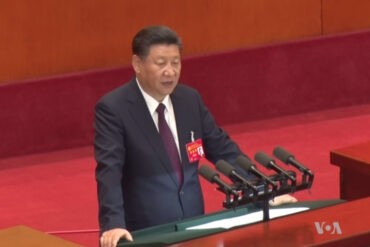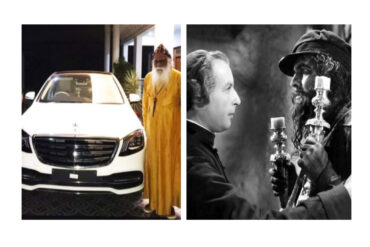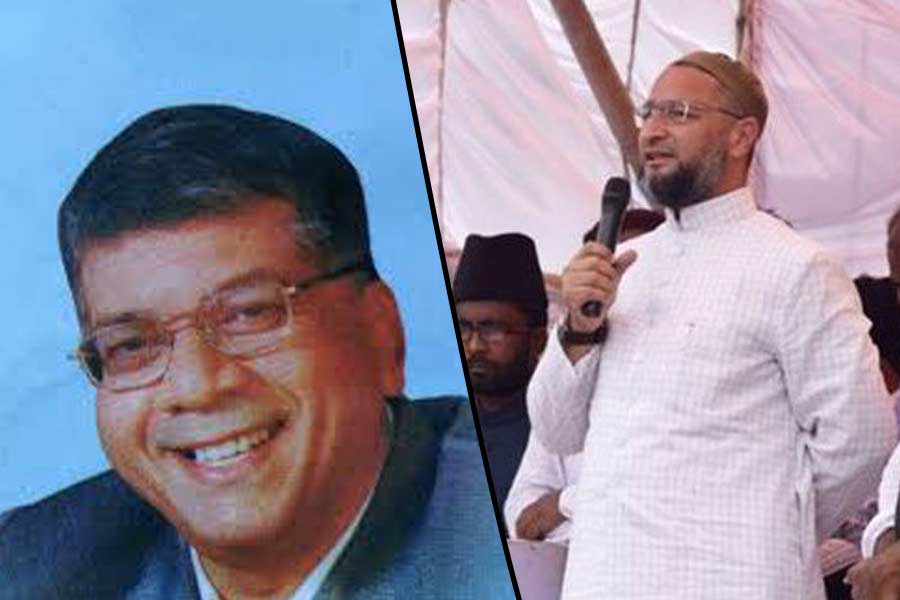Going by the huge gatherings and media coverage, one has to assume that Prakash Ambedkar and Asaduddin Owaisi’s alliance has taken Maharashtra’s politics by storm. Otherwise, Loksabha elections in Maharashtra would have been a routine, straightforward contest between BJP-Shiv Sena and Congress-Nationalist Congress Party alliance. Ambedkar-Owaisi’s Vanchit Bahujan Aghadi (VBA) has challenged the traditional political equations in the state. Whether it remains a storm in a tea cup or becomes a real hurricane remains to be seen.
Today, Prakash Ambedkar, grandson of Babasaheb Ambedkar, is the most credible face in the fragmented dalit movement in Maharashtra. His rose to limelight in December 2017, after promoting the historic ‘Elgar Yatra’, along with former justices P B Sawant and B G Kolsepatil, to commemorate bi-centenary of historic Bhima Koregaon battle. The Yatra concluded at Pune’s Shaniwar Wada. A dalit gathering at the Brahminical prestige possession was too much for a section of Puneites. Hindutva radicals tried to instigate their supporters against this Yatra by dubbing them Maoists.
On 1st January 2018, local Hindutva goons attacked hundreds of dalit pilgrims in Bhima-Koregaon. Prakash Ambedkar was the only dalit leader to stand by the victims. With the support of left parties, he gave a call for a statewide Bandh which was successful. Police arrested several dalit activists even as Ambedkar took on Hindutva radicals by naming them publicly. Ambedkar’s courage was appreciated and he began to acquire a following among youngsters.
Ambedkar’s political calculations rely on this newly acquired goodwill. His party’s vote share was a meager 1.08 percent in the last assembly election. Though Maharashtra has 12 percent Dalit population, it is fragmented among Buddhists and Hindu Dalits. Buddhists are 4 percent and Hindu Mahars are 2 percent along with 6 percent are other Hindu SC communities. For years, Prakash Ambedkar’s core voters have been Buddhists. But all the Buddhists don’t support him, as there are various factions. A big chunk of Hindu Dalits are with the Shiv Sena and the BJP.
Prakash Ambedkar needed an ally who could add to his vote share. Majlis-e-Ittehadul Muslimeen (MIM)’s Owaisi was the best bet. After all, Owaisi has also been trying to penetrate certain pockets of Maharashtra. Muslim vote share in the state—traditionally a vote bank of the Congress—is approximately 11%. In the 2012, Nanded Corporation election, in Marathwada region, Owaisi tasted success for the first time. In the ensuing 2014 assembly election, 2 MLAs of MIM got elected from Aurangabad and Mumbai respectively. But Owaisi has not been able to consolidate beyond that. His influence is restricted to certain pockets of Marathwada and Mumbai.
Ambedkar approached Owaisi to float a social combination of Dalit-Muslims and Other Backward Castes (OBC). Ambedkar had tried this experiment back in the 1995 elections under the banner of Bahujan Mahasangh. It was successful in Akola in Vidarbha at a local level but failed to create a statewide impact. This election, he seems to be repackaging the idea and Barrister Owaisi, who is a mesmerising orator and has money power, makes a perfect foil.
This social combination of Ambedkar-Owaisi looks strong on paper but faces a few roadblocks on the ground. As mentioned earlier, Dalits are not a homogeneous community. The major castes in OBCs like Mali, Vanjari or Dhangars are with the BJP as it has successfully cultivated the ‘Madhav’( Mali-Dhangar-Vanjari) formula for last 25 years under the leadership of Gopinath Munde. There is a small section of Mali community also with NCP because of Chhagan Bhujbal.
So, Ambedkar was only left with small OBC communities like fishermen to tap into who have traditionally backed either the Shiv Sena or Congress. Muslims are mostly backing the Congress/NCP this time as they would vote for a candidate that is best suited to defeat BJP. Ambedkar-Owasi alliance’s success depends upon how much they can dent the traditional vote base of these established parties.
Ambedkar-Owaisi alliance lacks party machinery in most of the constituencies. They are a bunch of enthusiastic activists with meagre resources. Which is why Ambedkar was accused of making a secret pact with the BJP when he suddenly started commuting by helicopters. His selection of candidates has also been abysmal. Highlighting the caste on a candidate’s name can make you popular among naive Bahujan activists but doesn’t guarantee votes. There is no notable face in the list apart from Ambedkar himself and Imtiyaz Jaleel, who is contesting from Aurangabad.
Ambedkar claims this is a social and political experiment to give political representation to underprivileged sections which could eventually change the course of Maharashtra politics. Good idea, but an old one, as BSP founder Kanshi Ram has already tried it in North India. Ambedkar says VBA will damage both BJP and Congress in this endeavour. But ground reports indicate VBA will mostly hurt Congress-NCP on 5 to 6 seats. Ambedkar could defeat Congress veteran and former Home Minister Sushil Kumar Shinde in Solapur (where BJP has a weak candidate) but the alliance is unlikely to win more than 2 seats in the state. Like MIM, this new outfit is also facing allegations of being a “Vote Katua Party.”
In the past, the idea of Dalit-Muslim-OBC unity has proved to be a misnomer. Haji Mastan, a smuggler turned politician, tried it years ago by floating the Dalit Muslim Minority Suraksha Mahasangh. BSP supremo Kanshi Ram attempted it in Uttar Pradesh followed by his protege Mayawati. In Bihar, Lalu Yadav has used Yadav-Muslim combination successfully. But Dalits refused to support Yadavs and vice versa. While analysing this phenomenon, one should consider the socio-political history and psychology of Muslim- Dalit communities. A section of Dalits is as anti-Muslim as caste Hindus. Over the years, they have nurtured prejudices about minorities. Dalit-Muslim unity can probably become good arithmetic but cannot guarantee the chemistry as everyday politics is much more complicated than these calculations.
We can only assess the success of VBA experiment after the poll results on 23rd May. If Ambedkar-Owaisi can damage Congress-NCP, their nuisance value will definitely grow ahead of the assembly elections this October. Prakash Ambedkar would then probably get his due in Maharashtra politics. Something he has been striving for, for four decades.







